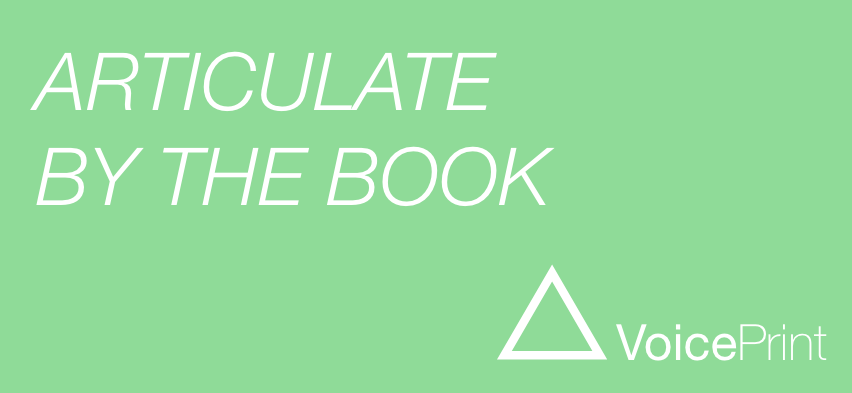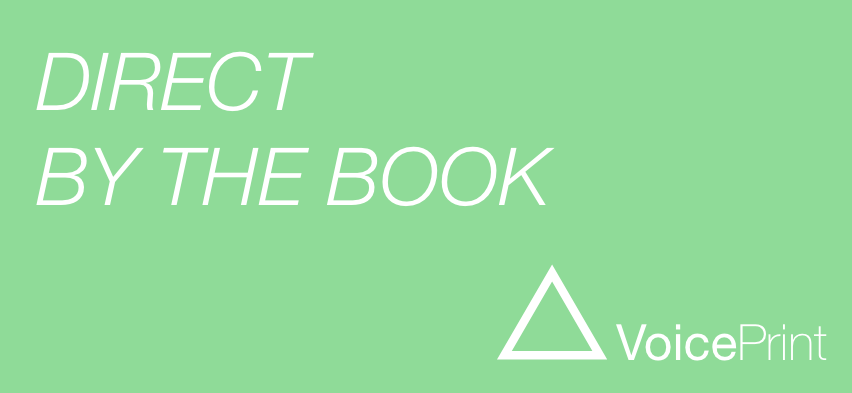How to use the right voices to sell well
There’s more to selling than selling.
That will sound cryptic, if not nonsensical, so let me hasten to explain. Effective salespeople do more than simply push their products, propositions or services. So what else do they do? How do you sell well? What does that sound like? What voices are involved?
We’ve all had experience of ‘bad’ selling, the hard sell of the pushy salesman. He’s stuck in transmit mode, telling you about what he’s got, telling you why it’s so great, telling you why you need it, telling you why it’s such a bargain and why you can’t afford to miss out. In VoicePrint terms this is the Advocate voice at its most basic, making a case for something and then piling on one argument after another to give the case more weight. It’s a way of trying to force you into agreement.
It’s the simplest form of selling. It’s crude, but it’s powerful and you can hear it every day, being used by politicians and lobbyists in public life, by managers and functional specialists in organisational life, by pleading children and parents in the home. It works, after a fashion, but it comes with a cost: it tends to put strain and tension into the relationship between seller and buyer. That’s why simple advocacy works best, and arguably only works, when that relationship is strong enough to take the strain. In political systems, organisational employment and families there are established, not unbreakable but generally enduring, relationships between the participants.
The same cannot be said for most buyer-seller relationships. On the contrary, we now live – at least in the developed world – in an era of unprecedented levels of information and choice for buyers. We’re a long, long way from Henry’s Ford’s alleged posture to would-be buyers of his cars, ‘You can have any colour you like so long as it’s black.’ The balance of power in modern consumer society has swung decisively towards the buyer.
As a result sellers have learned to use an additional voice. They need one that will engage the prospective buyer and develop the relationship at least to the point where the buyer will stop and listen, and ideally to the point where he will part with money. We all know what a seller’s overtures sound like these days. The telephone call that start, ‘Hello, am I speaking to Mr Ian Robinson? My name is Eric.’ Or the young people in the streets wearing bright tee-shirts and carrying clipboards, intent on enrolling you to make regular donations to a charity. ‘Hi, you look like someone who cares about animal welfare. Can I just take a minute of your time?’
Advocacy has been joined by a voice that sounds like Inquiry. The effect is to soften the edges of the advocacy. The question makes the intervention sound more personal, potentially more relevant. It prompts the listener to pause, to permit themselves to be interrupted, perhaps to consent to listen. But it’s no more than a seller’s trick. It’s a hook. The question isn’t designed to let the prospect speak; it’s designed to catch them and get them to listen. It’s not genuine Inquiry, which is a voice without preconception that seeks to find out what the other person thinks, feels and is concerned about. It’s a form of Probe, designed for the benefit of the seller. It’s focused on securing a tacit permission to intrude and it works by taking advantage of most people’s natural politeness.
Or more precisely, it works to the extent that people retain any vestige of that politeness. For many of us the inauthenticity of the faux personal overture had already become too familiar and simply intolerable. It has made us more sceptical and less receptive. We give the cold caller short shrift, usually abruptly, sometimes angrily. We might give the donation seekers an apologetic, sympathetic smile, but we keep walking. We don’t engage. We’re not buying the false bonhomie, never mind what else they’re trying to sell us.
Yet developing a relationship with the prospective buyer is the key to good selling. If the prospect shows no interest, the seller is nowhere. So we’re back to my earlier point about the balance of power between buyer and seller, but needing to confront a further implication to that point. Not only is the buyer in control of deciding whether or not to spend, they also hold the initiative in deciding whether or not to take any interest in the prospective seller.
Pushy sellers making exaggerated claims and employing shall relationship-building techniques don’t work with savvy and discerning buyers.
Nowadays sellers need to be interesting and distinctive, need to have a track record of delivering in practice what they claim to be offering, and need to make these characteristics available for remote and independent inspection before they can even expect to get the opportunity to have a conversation with a prospective buyer.
An accessible, well-organised, easy-to-use and interesting web site is an essential foundation stone in this context. Good sellers no longer start by selling; they start by giving things away – information, ideas, insights, the products of their research and experience – sharing value as a way of establishing their credentials. There are a number of voices other than Advocacy that can be used to do this. The would-be seller can Articulate to describe, clarify and comment on issues that might be of relevance. He can Advise to suggest courses of action for tackling these issues. He can Challenge to be thought-provoking or innovative. He can Diagnose to survey and share patterns and trends. He can Critique to provide an assessment of alternatives.
Whatever form or forms of introducing himself the seller adopts, these are all ways of demonstrating that he has something substantial to offer in relation to issues that matter for the buyer. It’s also a way of acknowledging that the relationship between buyer and seller, if it is to be more than cheap, cursory and transactional, needs to become a form of collaborative problem-solving. Of course the seller needs to provide something which helps to solve a problem or create an opportunity for the buyer, but he also needs to contribute to the process of defining the problem or identifying the opportunity. Selling well is rooted in exploration rather than advocacy.
So if old-fashioned selling is essentially a one-way communication by the seller talking at the prospective buyer, good selling is a two-way process, a conversation between them about something which matters to the buyer. This immediately requires a range of voices, because you can never predict with absolute certainty where any conversation will go. Productive conversations, collaborative problem-solving, the development of trust and enduring relationships between buyers and sellers – these are all iterative processes. The outcome is not given at the start but emergent. The result depends on how the conversations unfold and what the people concerned bring to those conversations.
Selling well might entail any and all of the nine voices that we identify in the VoicePrint model, because the good seller works with the prospective buyer to make the conversation productive for them both. The good seller Inquires to understand the prospective buyer’s issues and needs. She Articulates not only to explain and clarify her offering in an objective way, but also to demonstrate her grasp of what the prospect is sating. She Probes to get a deeper understanding of the prospect’s reservations and concerns, but she encourages the prospect to Probe in turn to resolve any uncertainties or ambiguities. The good seller joins the prospect in using the Diagnose, Challenge and Critique voices to analyse, test and evaluate possibilities, because it is in both parties’ interests to arrive at a rigorously thought-through and effective outcome.
The good seller knows that this is how you build trust and enduring relationships with clients, not by seeking short-term advantage, but by helping the client to be successful. The good seller knows that most business is repeat business and that selling well is about leaving simple advocacy behind in favour of a much fuller set of voices, the right voices to sell well, used authentically and collaboratively.
Download the Good Sellers Voices PDF
This resource has examples of the voices and their purposes within the seller’s repertoire.
Oops! We could not locate your form.

Alan Robertson
Ready for a conversation?


